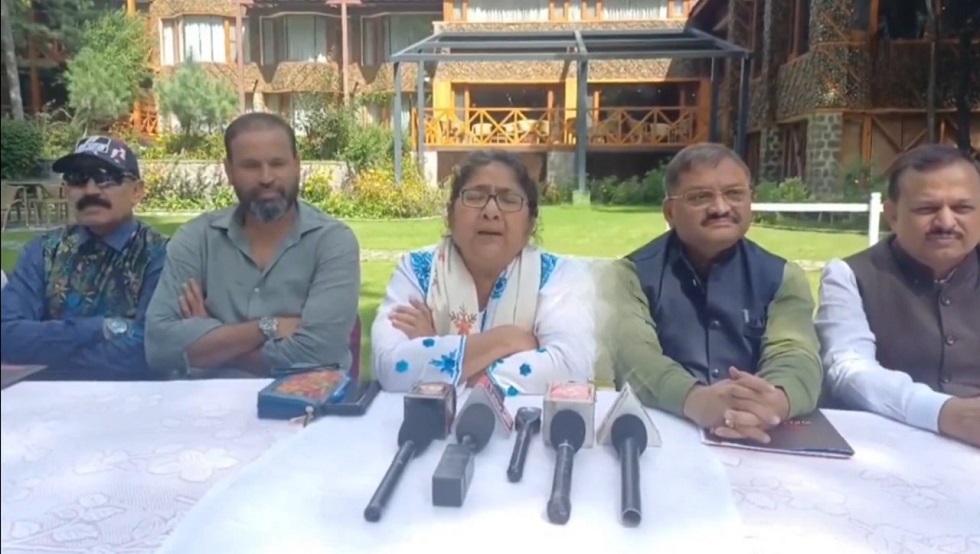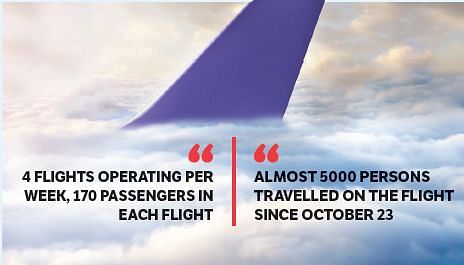Kashmir Tourism Revival: Parliamentary Panel Pledges Support for Trade & Industry
By: Javid Amin | 16 September 2025
A Visit Beyond Symbolism
In a rare gesture of solidarity, the Parliamentary Standing Committee on Commerce, led by Member of Parliament Dola Sen, visited Pahalgam and Srinagar in September 2025 to directly engage with the stakeholders of Kashmir’s fragile economy.
The timing was crucial. Just months earlier, a terror attack in April rattled the region, leading to mass cancellations and renewed fears about safety. For a state where tourism and trade are not luxuries but lifelines, the visit sent a strong political message: Kashmir’s economic heartbeat matters in Delhi.
“We are here not just to listen, but to act,” Sen emphasized. “Our goal is to ensure that such incidents do not permanently derail the growth of tourism and commerce in Jammu and Kashmir.”
The visit combined empathy with intent, but it also laid bare the deep structural challenges faced by hoteliers, traders, artisans, and industrialists who have been demanding action, not sympathy.
Tourism in Kashmir: A History of Highs and Lows
The Golden Years of Tourism
Tourism in Kashmir is not just an industry—it is part of the Valley’s cultural fabric. From the Mughal emperors who declared Kashmir a “paradise on earth” to Bollywood’s golden era when Dal Lake and Gulmarg became film backdrops, Kashmir has always been India’s crown jewel.
-
1980s: Over 700,000 tourists visited annually, peaking with foreign travelers.
-
1990s: The insurgency led to a near-collapse of the sector.
-
2000s: Gradual revival as domestic tourists rediscovered Kashmir.
-
2010s: The sector rebounded, with record-breaking 12 million tourist footfalls in 2022.
The Fragility of Success
Yet, every time optimism builds, political instability or security incidents shake confidence. From curfews to highway closures and terror incidents, the cycle of boom and bust has left the industry on edge.
The April 2025 attack was the latest reminder of how fragile Kashmir’s tourism ecosystem is.
The Present Crisis: Impact of the April Attack
Shockwaves Through Tourism
The April terror attack sent shockwaves across the region’s tourism sector:
-
40% hotel cancellations in Pahalgam and Srinagar within weeks.
-
Travel agents reported hesitancy from metro city clients.
-
International bookings, particularly from Gulf countries, slowed down.
-
Handicraft traders saw reduced footfall at showrooms.
The Parliamentary Panel’s visit aimed to reverse this narrative by instilling confidence in both local businesses and potential tourists.
The Emotional Toll
Beyond economics, there was also a psychological impact.
“Every time there is an attack, the world assumes Kashmir is unsafe for years. It takes us forever to rebuild confidence,” said a hotelier from Srinagar.
Stakeholders Speak: Action Over Sympathy
During its meetings with hoteliers, travel agents, artisans, and industrialists, the panel heard a common refrain: enough of symbolic visits—what we need is systemic reform.
KCCI’s Memorandum: The Key Demands
The Kashmir Chamber of Commerce and Industry (KCCI) presented a detailed memorandum to the committee. Their demands included:
-
₹75,000 Crore Industrial Package – To kickstart investment and job creation.
-
Logistics Parks & Warehousing Hubs – To improve supply chains for perishable goods and exports.
-
Preferential Procurement for Local Manufacturers – Ensuring Kashmir-made products have guaranteed buyers in government and private sectors.
-
Revival of Handicraft Exports – Boosting traditional crafts like Pashmina, carpets, and papier-mâché with branding and e-commerce.
-
Tourism Branding Campaigns – Repositioning Kashmir as a safe and premium destination globally.
-
Single-Window System – To end bureaucratic red tape and speed up business approvals.
-
Functional Industrial Incentive Scheme – With real, accessible benefits for startups and manufacturers.
The Committee’s Commitment: From Words to Roadmaps
Dola Sen and her delegation assured stakeholders that their voices would be translated into policy recommendations.
“We stand shoulder to shoulder with the people of Kashmir. Tourism and trade are not luxuries—they are lifelines,” Sen declared.
The committee’s findings will be compiled into a time-bound report to be submitted to both the Union Government and the J&K administration. The delegation will also extend its consultations to Leh, ensuring a holistic regional roadmap.
Why Kashmir Needs More Than Packages
Structural Problems Hindering Growth
Even before the April attack, Kashmir’s economy was suffering from:
-
Bureaucratic Delays: Multiple clearances, long approval processes.
-
Poor Infrastructure: Inadequate logistics, power shortages, and patchy internet in rural areas.
-
Limited Connectivity: Dependence on NH-44, frequent flight cancellations in winter.
-
Skill Gaps: Young entrepreneurs often lack training in tourism marketing, digital exports, and finance.
Past Packages: Big Announcements, Limited Impact
Kashmir has seen multiple economic packages in the past, but the impact has often been diluted due to poor implementation. Stakeholders fear the ₹75,000 crore package may meet the same fate unless backed by transparent mechanisms and accountability.
Comparative Lens: Himachal, Ladakh, and Beyond
Himachal Pradesh
-
Tourism Model: Aggressive branding as a year-round destination.
-
Policy Support: Homestay schemes, road connectivity, and adventure tourism.
-
Lesson for Kashmir: Create diversified tourism products beyond Dal Lake and Gulmarg.
Ladakh
-
Adventure Capital: Trekking, biking, and winter sports attract global tourists.
-
Government Support: Heavy focus on eco-tourism and community-based models.
-
Lesson for Kashmir: Promote eco-tourism and niche experiences like wellness retreats, farm stays, and village tourism.
International Comparisons
-
Switzerland: Integrated rail, air, and road logistics ensure seamless tourist experience.
-
Bali, Indonesia: Smart tourism branding overcame terror incidents by emphasizing culture and spirituality.
-
Lesson for Kashmir: Invest in branding, infrastructure, and storytelling.
Handicrafts: Kashmir’s Underrated Economic Engine
Tourism and handicrafts go hand in hand. Every tourist who buys a shawl, carpet, or papier-mâché piece becomes an ambassador of Kashmiri culture.
-
Handicrafts employ over 3 lakh people.
-
Exports have declined in recent years due to lack of branding and competition from machine-made goods.
-
E-commerce platforms remain underutilized.
A revival plan that ignores handicrafts would be incomplete.
Voices from the Ground: Human Stories
A Hotelier’s Plea
“Each time bookings fall, it takes us months to recover. We need the government to guarantee tourists that Kashmir is safe,” said a Pahalgam hotel owner.
An Artisan’s Desperation
“We make world-famous carpets, but without global markets, our art is dying. We need help to connect with buyers abroad,” shared a Srinagar artisan.
A Young Entrepreneur’s Frustration
“I want to start a travel-tech company for eco-tours, but permissions take forever. If there was a single-window system, I could employ 50 young people tomorrow,” said a university graduate.
Global Lens: Can Kashmir Compete Internationally?
For Kashmir to compete with global destinations, it must:
-
Invest in Safety Perception – Through campaigns and influencer marketing.
-
Diversify Offerings – Adventure tourism, wellness retreats, and cultural circuits.
-
Strengthen Air Connectivity – Direct international flights from Srinagar to Gulf hubs.
-
Promote Local Products Globally – Pashmina, saffron, apples, and dry fruits as part of “Brand Kashmir.”
Kashmir has the natural beauty of Switzerland, the culture of Bali, and the spirituality of Bhutan—but lacks the policy framework to leverage it.
The Road Ahead: A Multi-Layered Strategy
For real revival, Kashmir needs a multi-pronged approach:
-
Infrastructure Upgrades: Roads, airports, digital connectivity.
-
Industrial Parks: Warehousing, logistics hubs, cold chains.
-
Tourism Branding: Targeted campaigns in Gulf, Southeast Asia, and Europe.
-
Ease of Doing Business: Single-window clearance, digital systems.
-
Youth Entrepreneurship: Training, incubation centers, startup incentives.
-
Safety & Confidence Building: Visible security measures + promotional campaigns.
Bottom-Line: Promises vs. Ground Reality
The Parliamentary Panel’s pledge has created a buzz of optimism across Kashmir. But optimism must translate into concrete results.
For Kashmir’s hoteliers in Pahalgam, artisans in Srinagar, and traders in Lal Chowk, the stakes are high. If reforms happen, the Valley could see a tourism and trade renaissance. If not, promises will remain another chapter in Kashmir’s long history of missed opportunities.
As Dola Sen put it:
“Tourism and trade are not luxuries—they are lifelines.”
The question now is whether Delhi will listen to Kashmir’s lifeline before it breaks.



